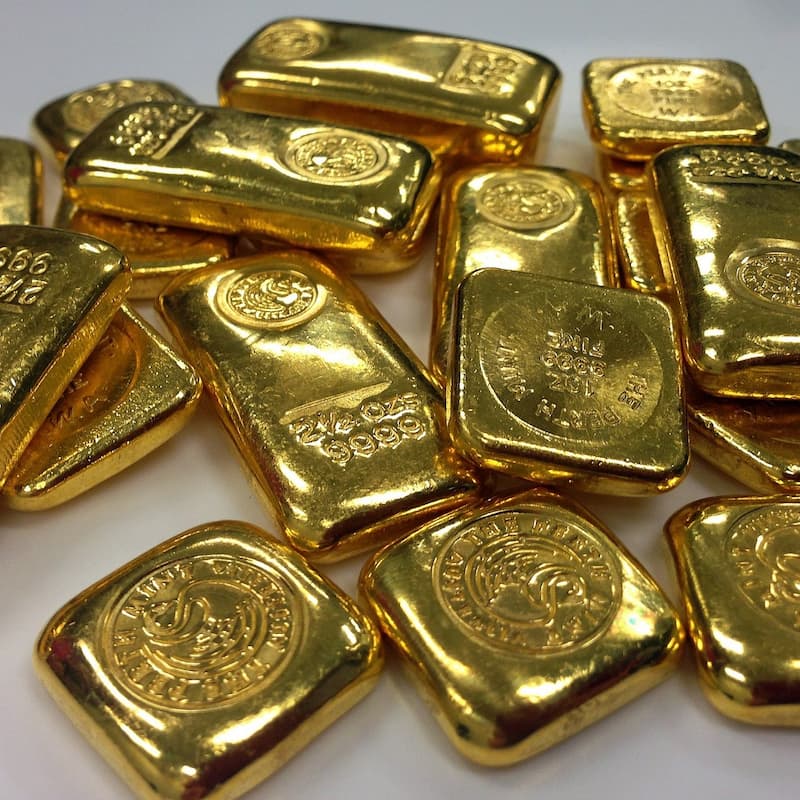Alt Investments
Tokenized Gold: A Path To Modern Financial Inclusivity

The author of this article, working at a firm operating in areas such as blockchain distributed ledger tech, explains how the gold market can be opened up by new entities.
The following article talks about using the technology of “tokenization” and applying it to the gold market in order to make gold ownership easier, and accessible to a far wider share of the population. This news service has examined the intersection of blockchain-driven tech and gold before. As reported by CoinDesk in April this year, tokenized gold assets surpassed $1 billion in combined market capitalization. Tokenized gold is a type of stablecoin that pegs its price to gold, while the tokens on the blockchain represent ownership of physical gold managed by the issuer.
The article is from Anoushka Rayner, head of growth, Paxos. The firm is a blockchain and tokenization infrastructure platform. Paxos operates an entity called PAXG, which the firm says offers investors a way to own investment-grade physical gold while using the blockchain. Each Pax Gold (PAXG) token is backed by one fine troy ounce of gold, stored in LBMA vaults in London.

The editors of this news service are pleased to share these views; the usual editorial disclaimers apply. Email tom.burroughes@wealthbriefing.com
Globally, it has been estimated that around 1.7 billion adults
are without access to traditional banking services. In Africa,
one study in 2021 found that 50 per cent of Africa’s population
remains unbanked or underbanked. With this huge gap in financial
participation – often concentrated in lower income countries –
economic and societal development is severely stunted.
Financial inclusivity is an area that has received little
attention, yet it unlocks the door to untold economic potential.
It’s the classic case of huge amounts of cash being stored under
mattresses, rather than being used productively. If developing
countries were to increase the proportion of people engaging in
the financial ecosystem, they would enjoy a virtuous cycle: more
cash in the system means more savings, more savings means more
capital for enterprise, more enterprise means more jobs – and so
on.
However, inflationary pressures and high levels of sovereign debt
have made it almost impossible for lower-income economies to
address the lack of financial inclusivity. Clearly, the current
debt-based fiat system is broken, and it’s about time we
considered an alternative value system that engages both unbanked
and underbanked sectors of society.
Many are looking to gold as an alternative, and rightfully so.
Historically speaking, it has been an effective hedge against
inflation for investors – and this has piqued the interest of
governments wanting to create stability and promote financial
inclusivity.
Unfortunately, it is yet to make its mark as a true monetary
alternative to fiat. This is largely a symptom of gold, in its
physical form, being far too expensive and inaccessible for many
lower income countries. Consequently, adoption of gold remains
low, as highlighted by the World Gold Council’s quarterly report
which shows that only one lower-middle income country – India –
is in the top 25 countries in terms of gold holdings.
This is a damning picture and goes to show just how underused
gold is in developing countries. Naturally, it begs the question:
if the gold is a steady and stable asset, how can we use the
yellow metal effectively to address the growing socio-economic
headwinds that many lower income countries are facing?
As a physical asset, unpacking the value it can bring to
economies is difficult to assess.
Tokenized gold – a secure 1:1 digital token – solves the problem
of accessibility and lowers the barriers to investment and
participation in the digital economy. The rise of new technology
such as blockchain, digital wallets and tokenization means that
everyone with access to a smartphone can hold some form of
financial power. This will solve the issue of proximity to
financial institutions, as 22 per cent of responses from the
unbanked worldwide cited that institutions are too far away.
Adding to this, tokenization allows for fractionalisation, which
gives citizens the opportunity to own small portions of
institutional investment grade assets. This is a new development
that can give people access to an asset class that protects their
purchasing power and ability to save for the future. Not only is
this essential for high inflation countries – such as Eritrea,
Malawi, and Haiti, which are hovering around the 20 to 30
per cent inflation mark – it also empowers retail investors
in the region who can benefit from accessibility through secured,
1:1 backed tokens with self-custody in a digital wallet.
We are already witnessing countries benefiting from the explosive
opportunity offered by stable currency. Zimbabwe is an example of
a country prone to hyperinflation yet benefiting immensely from
the adoption of gold-backed currency. The reserve bank attributes
a 30 per cent drop in month-on-month inflation to the issuance of
gold coins.
Sure, the mobilisation of gold via tokenisation is unlikely to
revolutionise lower-income countries overnight. Fortunately, it
has the potential to open the floodgates to a viable alternative
value system and lay the foundations for greater financial
inclusivity over the long term.
